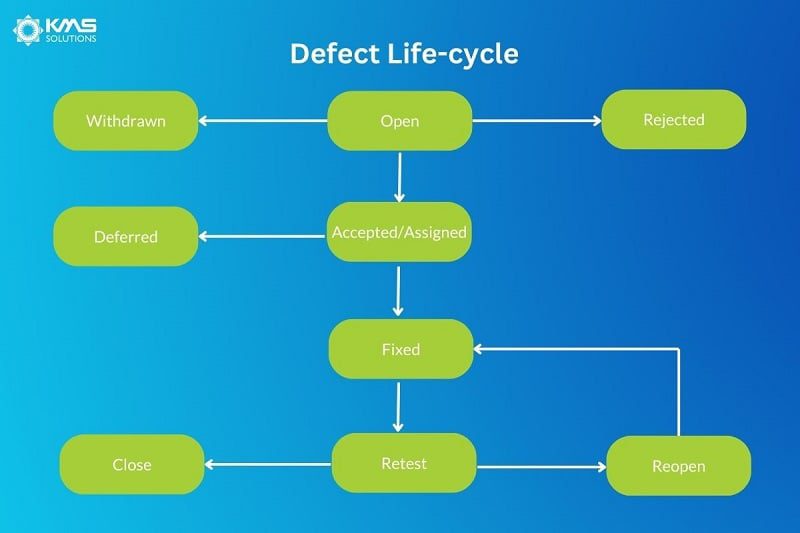Comes with multiple benefits, from enhancing your processes and saving time to producing higher-quality software, automation testing adoption is skyrocketing. However, like every other tool and method, its implementation requires a clear plan to yield the desired results.
This article will guide you through the process of creating and conducting an effective automated testing plan, enabling you to optimize your product and ensure your testing efforts are worthwhile.
What is an automation testing plan?
A test automation plan outlines the scope, goals, objectives, resource planning, estimations, and responsibilities of each team member. It also entails potential risks and a contingency plan.
Is an automation testing plan necessary?
Like Mikhail Chigorin once said, “Even a poor plan is better than no plan at all”. So yes, a test automation plan is essential.
A well-crafted test automation plan can justify the implementation of automation. The QA testing plan provides stakeholders with a clear and comprehensive approach to automation and ensures that automation is measurable and traceable. Finally, by outlining the goals and objectives of automation, the test plan for automation testing provides direction to the testing process and helps to demonstrate the ROI associated with automation.
Benefits of writing a test automation plan
Creating an automation testing plan offers various benefits for a testing team and the overall software development process. Some key advantages include:
- Improves the ROI of implementing automation
A well-structured test automation plan not only enhances the efficiency of the testing process but also delivers a substantial ROI by addressing various aspects of the SDLC. Having an effective testing automation plan helps reduce the time required for test execution and reuse the testing script properly to ensure the company can maximize its resources investing in the testing process.
- Provides a general overview of the project
With a proper testing automation plan, businesses can have a comprehensive overview of the project’s testing strategy, objectives, and execution approach. It begins by defining the project’s scope and deciding the functionalities and components of the software that will undergo testing.
The QA testing plan also helps identify testing tools and technologies at the beginning, along with any integrations required to seamlessly incorporate automated testing into the project’s framework.
- Offers stakeholders an articulated approach to automation
The automation testing plan articulates a well-defined strategy for creating, organizing, and prioritizing automated test cases, fostering comprehensive test coverage. The plan also establishes a systematic schedule for test execution, encompassing various testing aspects such as regression and performance testing.
Step-by-step guidance on creating an automated testing plan
Having covered the fundamentals of test automation planning, it’s time to delve into the details of a test plan for automation testing. The steps outlined in this section are universally applicable, regardless of project type or size, and guide you on how to do an automation testing plan:
1. Objective
This section defines the intended goals of the automation test plan document and establishes stakeholders’ expectations concerning the document’s scope.
2. Project Overview
This section provides a high-level overview of the project to stakeholders, enabling them to gain a better understanding of the project and how the automation plan fits within it
3. Assumptions
This section aims to identify all assumptions made during the automation planning process that could impact the successful execution of the automation test plan. By addressing potential assumptions and their implications, this section ensures that the automation process proceeds smoothly and efficiently.
4. Return on investment (ROI)
Not every test scenario can or should be automated.
In this section, we must demonstrate how the investment will provide a substantial return to convince stakeholders of the importance of automation. This involves highlighting how the automation project will enhance the product’s life cycle and comparing the benefits of automation to those of manual testing.
There are several ways to measure ROI on test automation. The most basic ROI measurement method involves computing the time saved by executing a specific number of automated tests during a given period, in contrast to conducting manual tests.
ROI= (Gain from Investment – Cost of Investment)⁄Cost of Investment x 100
It’s crucial to keep in mind that the calculation above is simplified and may require the inclusion of additional parameters to increase its accuracy. These factors could encompass the time devoted to maintaining and updating the automated tests, the time saved by avoiding errors that may occur in manual tests, or the advantages of implementing tests on a large scale with automation
5. Automation Plan
This section identifies what processes to automate and how to plan for them. The following elements should be considered in this section:
- In-scope items/ out-scope items: When defining the scope of your test automation project, it’s essential to specify which items will be included (in-scope) and which won’t (out-scope). It’s unrealistic to automate every aspect of testing, so it’s crucial to establish the boundaries of your automation efforts within this topic.
- The type of test automation coverage: This step includes specifying the type of test automation you intend to use, such as integration testing or regression testing, and how it will be incorporated into the overall test cycle of the project
- Automation tools for each testing layer: When commencing a test automation project, you should research and compare different technologies to determine the best suited for the test automation layers.
- Estimation techniques: You have to determine which estimation technique is more appropriate to your project goals and objectives. You could also use the same techniques as your general project management approach if compatible with your automation project, such as T-shirt size estimation or planning poker.
6. Automation Design
In this section, you will dive deep into the design of your automation implementation. Whether you deploy a commercial tool or an in-house framework, the technical design should be carefully evaluated to ensure the framework remains scalable and maintainable throughout its entire cycle.
Lacking a technical design document can result in:
- Failure to adhere to best coding practices
- Monolithic application/ unstructured modules
- Poor code reusability
- Inadequate function-level modularity
- Absence of a separate test phase of the automation framework
- Improper design patterns
7. Automation Implementation
This section details the execution of automation for creating and performing test cases. Considerations to be emphasized in this section include:
- The approach to implementing automation at the project level
- The branching strategy for managing automation code and test cases
- Test data management
- Test environment management
8. Defect Management
The primary goal of automation is to ensure product quality and detect defects as they arise in the code. Thus, defining the process for capturing and reporting automation defects in the defect management tool is vital.

Below are the description of the various statuses that a defect can be during its lifecycle
| Defect State | Description |
| Open | Once a defect is identified, it’s recorded in the defect management tool with an open status. |
| Accepted/Assigned | After the developers acknowledge the defect, its status is updated to “accepted” or “assigned.” |
| Fixed | The defect is resolved by the developers and assigned back to the tester for verification. |
| Retest | Upon completion of the defect fixing and reporting process, the testing team conducts verification to ensure that the defects have been successfully addressed. |
| Close | When the testing team has verified that the defect has been resolved, the defect status is updated to “closed.” |
| Reopen | When the developer fixes the defect but the test fails, the tester will reopen the defect. |
| Withdrawn | When the reporter withdraws the defect as it turns out not to be an actual issue |
| Rejected | The developer rejects the defect as invalid |
| Deferred | The defect is considered valid but postponed for upcoming releases due to its low priority |
9. Test automation report
To ensure a clear and informative automation run report, the framework design should incorporate the details of the executed test cases, performed validations, and the pass/fail results.
A comprehensive test report typically includes:
- Project information: project’s name and description
- Test objective: purpose and test types
- Test summary: test case implementation states
- Defect report: description, status, severity, and priority of the defect management process
10. Test automation maintenance
The maintenance of the automation framework involves the following activities:
- Increasing the framework’s resilience and scalability
- Refactoring the code
- Improving the expectation handling and error-logging mechanism
- Integrating new features into the framework to accommodate additional use cases and test cases
Conclusion
A well-defined automation testing plan is crucial for successful software development projects. Besides demonstrating the ROI, the automation testing plan provides a clear approach to effectively measuring and implementing automation.
Nevertheless, developing an automation testing plan can be a daunting task that demands meticulous planning and hard work to ensure positive outcomes. If you require professional assistance in navigating the process, our team of experts with over 12 years of experience in Automation Testing for BFSI are readily available to guide you through it.











